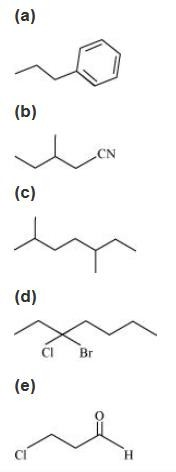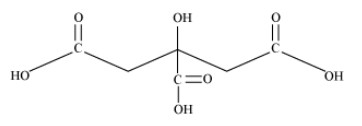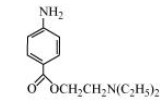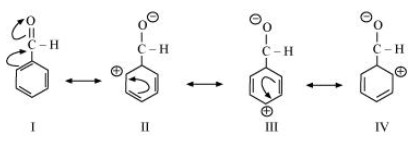Class 11 Chemistry Chapter 8 NCERT Solutions FREE PDF Download






FAQs on NCERT Solutions for Class 11 Chemistry Chapter 8 Organic Chemistry
1. What is Isomerism and What are its Types?
If two or more molecules have the same molecular formula but different structural formulas along with different physical and chemical characteristics, then this phenomenon is termed isomerism. Isomerism is of two types:
Structural Isomerism - When two molecules have the same molecular formula, but their structural formula differs concerning the arrangement of atoms. Those molecules are said to exhibit structural isomerism.
Stereoisomerism - When atoms or groups in space are arranged differently, then that phenomenon is called stereoisomerism. Molecules that are stereoisomers of another molecule have the same structural formula, but the arrangement of atoms in space is different.
Stereoisomerism is further divided into two types:
Geometrical isomerism
Optical isomerism
2. What Happens in an Organic Reaction?
The fundamental concept of organic reaction is based on the fission of covalent bonds. A covalent bond undergoes fission in two ways:
Homolytic Fission - This is also referred to as homolytic fission where each of the atoms acquires one of the bonding electrons.
Heterolytic Fission - When the bond is broken in such fission, one of the atoms acquire both of the bonding electrons.
The process of fission gives rise to reaction intermediaries that are short-lived fragments. Some of the important reaction intermediaries are carbanions, carbenes, carbonium ions, and carbon-free radicals. Students can also Download organic chemistry class 11 NCERT solutions .
3. What are the topics in Chapter 8, Organic Chemistry of Class 11 Chemistry?
Organic chemistry class 11 NCERT solutions that deal with only carbon compounds and where other elements will be limited. The topics of organic chemistry are as follows;
Tetravalency of carbon.
Homologous Series
Organic Compounds and Their Classification
Isomerism - Structural Isomerism and Stereoisomerism (with Geometrical Isomerism and Optical Isomerism)
Attacking Reagents - Electrophile and Nucleophiles
Fundamental concepts.
Methods of purification of organic compounds.
Quantitative analysis.
4. What are the four main organic compounds found in the body, as discussed in Chapter 8, Organic Chemistry of Class 11 Chemistry?
There are four major organic compounds found in the body. They are:
Carbohydrates- Carbohydrates are the organic compounds that contain carbon, hydrogen and oxygen atoms in the ratio of 1:2:1.
Lipids or Fats- lipids consist of fats, oils and waxes. These help in storing energy from the structural cells which serve as insulation in organisms.
Proteins- These are responsible for certain reactions in organisms.
Nucleic Acid - Two types of nucleic acids are deoxyribonucleic acid(DNA) and ribonucleic acid(RNA). DNA is responsible for the genetic code of the organism. The production of proteins is done by RNA.
5. What is the importance of Chapter 12, Organic Chemistry of Class 11 Chemistry?
Class 11 chemistry chapter organic chemistry NCERT solutions is very important, not only for board exams in Class 12 but also because a lot of concepts are included in the syllabus for competitive exams such as NEET and JEE. It will also help you understand future concepts in Chemistry. The conceptual understanding of this ch 8 chemistry class 11 NCERT solutions will be more advanced, and unless the basic concepts are clear, it will not be possible to get a grasp of the subject. Students who want to continue the science stream need to properly grasp the concepts.
6. Define isomerism and the types according to Class 11 Chemistry ch 8 NCERT Solutions.
Isomerism is defined as the two molecules having the same molecular formula but different structural formulas. This will have different physical and chemical characteristics. The types are as below.
Structural Isomerism - In structural Isomerism, the two molecules have the same molecular formula but the structural formula may be different according to the arrangements of the atoms.
Stereo Isomerism - In this Isomerism, the atoms and the groups in the space are arranged differently. Molecules in this will have the same structural formula with different atoms arrangement.
Students Can also download the class 11 chemistry ch 8 NCERT solutions.
7. Define Homolytic Fission and Heterolytic Fission according to Class 11 Chemistry Chapter Organic Chemistry NCERT solutions.
The fission of the covalent bonds is the main concept of the organic reaction. Fission is of two types.
Homolytic Fission - In this type of fission, each atom gets the bonding electrons.
Heterolytic Fission- In this type when the bond breaks then the atom will get both the bonding electrons.
The class 11 chemistry chapter 8 NCERT solutions is very well explained in NCERT solutions from Vedantu in a very simplified way. The study material is available to download for free from Vedantu’s website (vedantu.com).
8. What is the additional reaction in organic chemistry?
In organic chemistry, the additional reaction involves the addition of one or more atoms or groups of atoms to a molecule, resulting in the formation of a single product. Download the Organic Chemistry Class 11 NCERT Solutions PDF for good practices to crack your exams.
9. What are the conditions for an additional reaction?
For an additional reaction to occur, unsaturated organic compounds like alkenes or alkynes must be present, along with a suitable reagent such as a halogen or hydrogen halide, and often a catalyst or appropriate temperature and pressure. Download the Organic Chemistry Class 11 NCERT Solutions PDF for good practices to crack your exams.
10. What is the hardest topic in class 11 organic chemistry NCERT solutions?
The hardest topic in chemistry Class 11 is subjective, but some students find organic chemistry challenging due to its extensive nomenclature, diverse reactions, and conceptual intricacies.
11. What is another name for the addition reaction?
Another name for the addition reaction in organic chemistry is addition polymerisation, where monomers join together to form a polymer by adding to double or triple bonds. Download class 11 organic chemistry NCERT solutions to get better expertise in the topic.
12. Which is the toughest chapter in organic chemistry?
The toughest chapter in organic chemistry varies among students. Still, some may find chapters dealing with reaction mechanisms, such as electrophilic addition or nucleophilic substitution, to be particularly challenging due to their conceptual depth and complexity.

































































